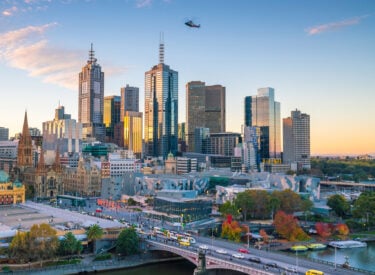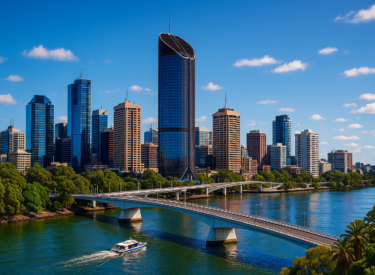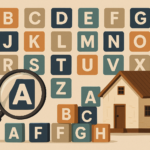
Key takeaways
We’ve moved from a broad, cohesive bell curve middle to a U-shaped society—more at the bottom and top, fewer in the middle.
The “average Australian” target market has thinned out, so business models are polarising (think Aldi at one end, premium retailers at the other).
Post-war policy deliberately manufactured a middle class via public housing, cheap credit, and land releases.
Today, housing costs outpace wages, job security has weakened, and essentials (childcare, education, health) bite harder.
Ownership still drives wealth, but access is increasingly determined by the Bank of Mum & Dad, entrenching intergenerational divides.
A strong middle class underwrites social stability, safe cities, balanced politics, and resilient demand—conditions that reduce portfolio risk and support long-run capital growth.
A shrinking middle raises volatility and policy risk.
For decades, Australia prided itself on being a land of opportunity.
We built one of the strongest middle classes in the world: secure jobs, affordable homes, free education, and a belief that if you worked hard, you could move up in life.
That sense of fairness and stability wasn’t an accident.
It was the product of deliberate policies after World War II that gave everyday Australians a stake in the nation’s prosperity.
But slowly, quietly, over the past 60 years, that middle has been eroded.
Today, fewer Australians feel secure in their position. More are slipping backwards.
And what’s emerging is a U-shaped society: many at the top, many at the bottom, but fewer in between.
This is not just an economic debate. It’s about the kind of Australia we want to live in.
For weekly insights subscribe to the Demographics Decoded podcast, where we will continue to explore these trends and their implications in greater detail.
Subscribe now on your favourite Podcast player:
From Bell Curve to U-Shape
In the 1960s, most Australians sat comfortably in the middle of the income spectrum.
Businesses targeted the “average Australian,” and society had a cohesion that came from a broad, stable middle class.
Now, as demographer Simon Kuestenmacher explains in our latest Demographics Decoded episode, the middle class has shrunk dramatically:
“We’ve gone from a society where most people were in the middle, to one where the middle is the smallest group. Middle-class jobs have largely vanished, leaving more people at the bottom end and more at the top.”
That shift has profound consequences.
Businesses no longer aim for the center of the market because it barely exists.
Instead, we see Aldi thriving as a discount option for cost-conscious families, while premium grocers and luxury retailers cater to wealthier households.
The mass-market “one size fits all” model of the past no longer works.
Housing: The Great Divide
If there’s one factor that symbolises both the rise and decline of Australia’s middle class, it’s housing.
After World War II, governments built vast public housing estates, offered cheap loans, and even gave land away to returning servicemen.
Homeownership became the cornerstone of middle-class life, providing stability, wealth, and pride of ownership.
As Simon puts it:
“Housing was pretty much the foundation of the new middle class. Owning a home gave you stability,
belonging, and a direct stake in Australia’s prosperity.”
But over the past few decades, housing costs have grown far faster than wages.
Secure full-time jobs have been replaced by casual, part-time, and gig work, making it harder for many to qualify for mortgages.
Rising costs of childcare, education, and healthcare have piled on the pressure.
Today, homeownership is still the key to building wealth, but it’s increasingly out of reach.
Families with assets can help their children through the “Bank of Mum and Dad.”
Those without are often locked out for good. That’s how intergenerational divides deepen.
Three Big Forces Shaping the Future
Simon highlights three structural forces that will determine what happens next:
- The Great Wealth Transfer: Baby boomers hold more assets than any generation before them. Over the next 20 years, up to $5 trillion will be passed down. But this won’t be spread evenly. Some millennials will inherit significant wealth, others will inherit nothing. As Simon notes, “That further intensifies the divide into rich and poor.”
- Population Growth and Migration: Our fast-growing cities push the wealthy towards prime suburbs close to beaches and CBDs, while lower-income households are pushed further to the urban fringe. This geographic divide creates more segregated cities and fewer opportunities for social mobility.
- Political Change: As renters become a larger voting bloc, and as more Australians feel the system isn’t working for them, our political landscape is shifting. In 1987, less than 2% of Australians voted for third parties. At the last election, it was a third. Simon predicts that within a few election cycles, we may well see a prime minister from outside Labor or Liberal.
What Can Be Done?
Stopping the erosion of the middle class, and ideally rebuilding it, requires bold reforms.
Here are some of the key ideas Simon raises:
- Education reform: Make TAFE degrees universally free. Too many young Australians are being funneled into university degrees that don’t lead to strong job prospects, while trades and technical roles, traditional middle-class pathways, are under-supplied.
- Universal childcare: High childcare costs prevent many lower-income families from returning to work. “In Germany,” Simon notes, “friends of mine complain about paying €80 a month for childcare. In Australia, that’s the cost of a single day.” Subsidising childcare could unlock enormous productivity and lift families into the middle class.
- Housing reform: Build more affordable housing close to jobs and transport, not just on the urban fringe. Phase out stamp duty, which acts as a barrier to mobility, in favour of a fairer, broad-based land tax.
- Tax reform: Consider inheritance or wealth taxes to prevent the great wealth transfer from entrenching inequality. Revisit superannuation concessions to ensure they meet their purpose, funding retirement, not creating tax havens for the wealthy.
None of this is politically easy.
As Simon admits, “If I wanted to make the middle class bigger, I’d look at these reforms right now. But as a realistic politician, I’d know they’re politically very challenging.”
Why It Matters for Investors
You might wonder: if you’re a property investor, why care about the health of the middle class? Isn’t the demand for rentals good for the market?
In my mind, the answer is bigger than just property returns.
A strong middle class creates social stability. It keeps our cities safe, our politics balanced, and our economy resilient.
As Simon points out:
“In Australia, we like the idea that your stuff is safe, you are safe, and you can move freely around most cities. That’s a big privilege. Governments should make that their goal.”
Without a thriving middle, we risk becoming a more divided, less cohesive nation.
That’s not good for investors, businesses, or families.
The Road Ahead
Rebuilding the middle class won’t happen overnight.
But it’s essential if we want an Australia that is fair, prosperous, and stable.
The solutions: housing reform, childcare, education, and smarter tax policy are well understood.
The question is whether we have the political will to act.
Because this is not just about economics. It’s about the kind of country we want to leave to our children.
If you found this discussion helpful, don't forget to subscribe to our podcast and share it with others who might benefit.
Subscribe now on your favourite Podcast player:














